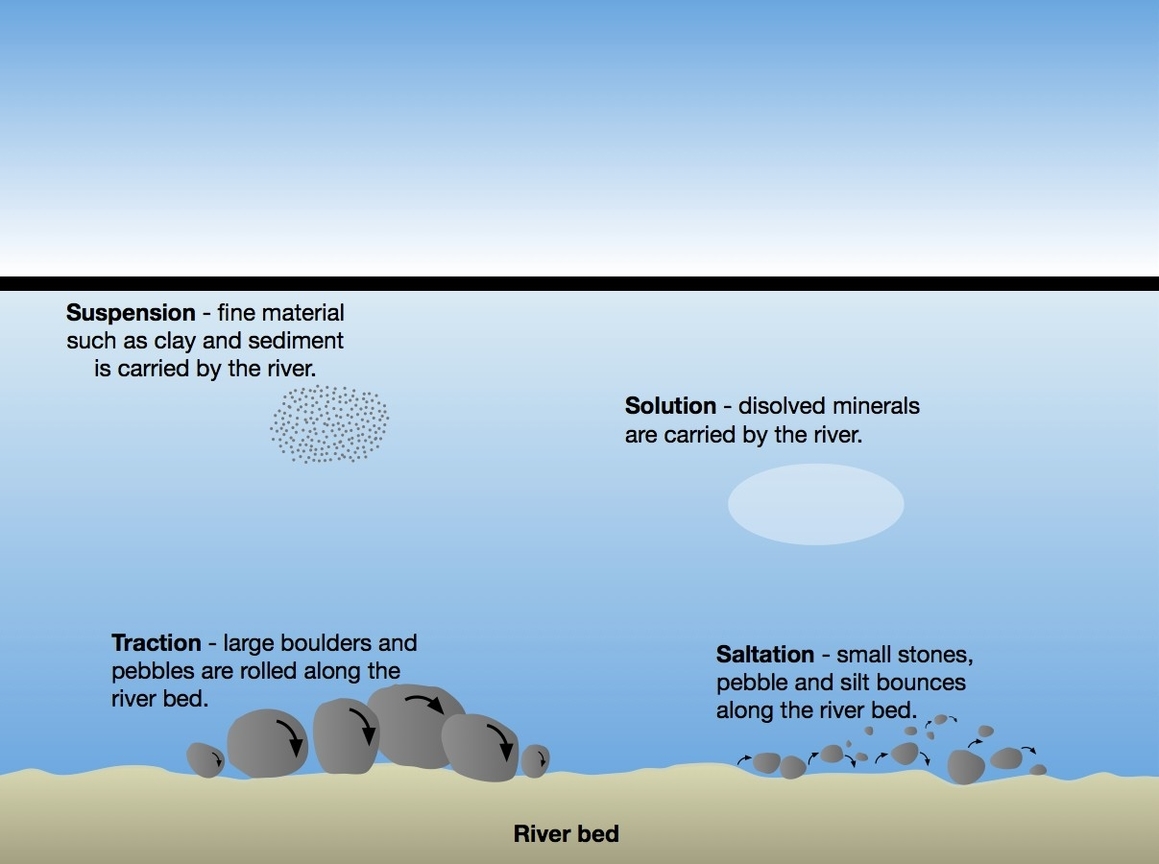
River transportation processes are the ways in which a river moves its load of sediment, rocks, and other materials downstream. There are four main types of river transportation processes: traction, saltation, suspension, and solution .
Traction is the process by which large, heavy pebbles are rolled along the river bed. This is most common near the source of a river, as here the load is larger . Saltation is the process by which pebbles are bounced along the river bed, most commonly near the source . Suspension is the process by which lighter sediment is suspended (carried) within the water, most commonly near the mouth of the river . Finally, solution is the transport of dissolved chemicals, which varies along the river depending on the presence of soluble rocks .
As a river flows downstream, the rates of erosion, transportation, and deposition change. In the upper course of a river, the rate of erosion is high, and the river is steep and narrow. The river’s load is mostly transported by traction and saltation. In the middle course, the river is wider and deeper, and the rate of erosion is lower. The river’s load is mostly transported by suspension. In the lower course, the river is wide and flat, and the rate of deposition is high. The river’s load is mostly transported by solution .
